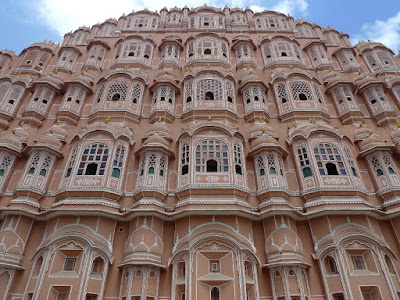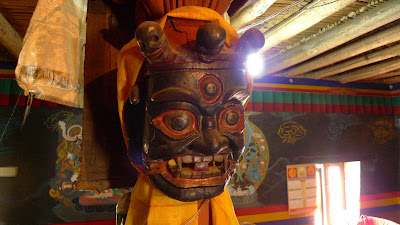
During the month of Kartika two big things happen: the Durga pooja, and Dussehra. Dussehra is the celebration of Rama over Ravana. In the Ramayan, the great Sanskrit epic, Ram and Sita are happily married, until Ravan, the King of Lanka, abducts Sita. Ram teams up with Hanuman and they track down Ravan, and in the end Ram and Ravan have a space fight on their chariots and Ravan dies. Even though he's a bad guy, he's also a mahatma -- a great soul, an intellectual -- and so during this festival his defeat is celebrated, but he's not vilified. It's rarely so black-and-white in Hinduism.

A giant Ravan paper statue, awaiting the fire. They are built with lots of firecrackers in their bellies, so they explode with great fanfare.

Like this.

Ravan with his ten sexy heads. This picture is both very Indian and non-Indian. Indian because hilarious; non-Indian because a little risque. It made it onto the internet, but I don't think it would make it past the TV censors.

Ram was assisted by Hanuman, here a small boy. On his chest is the word Ram written in lipstick. Hanuman is the ideal representation of pure devotion, selfless worship. He's also physically powerful (able to grow in stature so that he can step from India to Lanka in a single stride), and the god of preference for the North Indian wrestlers.

At night I like to walk around my colony and out to the main road. In this picture, the homeless are sleeping on a road divider as huge trucks fly past.

My pooch friends and bodyguards. They walk with me late at night, chasing down cows or other dogs who get too near.

When night, animals rule. Indian nights feel different than in other countries, because the few hours of quiet and desolation are in such stark contrast to the usual crush of humanity.

My eye.

My face.




















































